La Solitaire du Figaro gets underway
Published on August 30th, 2020
Saint-Brieuc, France (August 30, 2020) – The 35 solo sailors who started the 642 nautical miles first stage of the 4-leg La Solitaire du Figaro on Bay of Saint Brieuc on France’s north westerly Channel coast enjoyed a spirited send off in perfect 15-18 knot northerly winds.
With sunshine threatening to finally split the leaden skies, the fleet of one design Figaro Bénéteau 3s set their course for Fastnet Rock, 300-odd nautical miles to their west- north-west, knowing that the first 24 hours of the out-and-back passage will be battling through a ridge of complicated light winds in strong tides. This first night may yet prove decisive not just in terms of the first stage results but the whole four leg race.
France’s Tom Laperche (Team Bretagne CMB Espoir), who won the Solo Maître Coq and was second in the Drheam Cup, was leading the fleet on the beat out of the bay towards the turn left turn where sheets would be eased. Britain’s solo skippers made solid rather than spectacular starts, Phil Sharp (OceansLab) recovering quickly back into the fleet after being called as being over the start line before the gun.
Solidarity between skippers in the Figaro fleet is well known in the world of sailing and it was exhibited again when Gildas Mahé (Breizh Cola), runner up last year and local favourite on his home waters, tore his mainsail doing an emergency gybe to avoid a collision with another boat crossing his path.
Friend and rival Xavier Macaire immediately proposed to lend him a previous mainsail of his Groupe SNEF. With the rapid response and collaboration of other support teams, Mahé had the replacement set. He reached the start on time keeping intact his aspirations of winning Stage 1.
As the fleet negotiate the rocky north Brittany, English Channel coast this evening and into the night, northerly wind is due to fade, heralding the arrival of a high pressure ridge of very light, unstable and unpredictable winds.
As they left the dock in Saint-Quay-Portieux in Breton, drizzle nerves were obvious less so among those who have raced ten editions or more. “I’m starting to get to know things well, so I wouldn’t say I feel anxious, it’s more about concentration,” explained Adrien Hardy (Ocean Attitude), with ten participations and five stage wins on his clock. “The good thing about our sport is that there is always a huge part of adventure, it’s that uncertainty and playing with the natural elements that makes me come back every time.”
The northerly wind is expected to die progressively to become very light during Sunday evening and night, the prelude to 16-18 hours of calms. There are two tactical options which offer no middle ground, no safe, conservative choice between them. The sailors can either stick very, very close to the rocky coastline to try and knit together the land breezes.
The tidal current is favorable until around 8:00 pm this evening and then the fleet have a full contrary tide against them with less current towards the English coast but probably less wind. Inshore where the currents rip through the rocky islets and headlands anchoring might be a required option. The push is to get west through the ridge and into a building south south westerly wind which will gift the first into it a rich get richer scenario.
“It will be a bit of a lottery to start with,” grimaces Marcel van Triest, the Dutch weather guru who supported last year’s winner Yoann Richomme. “But the return from the Fastnet will be quite quick and then there might be this high pressure near the finish.”
Britain’s Sam Goodchild (Leyton) was up in the top ten during the first couple of hours of the course. Ranked among the pre-race favourites, Goodchild said before leaving, “There is a tactical choice to make tonight which can really impact rest of the leg and so I have been trying to get my head around that a bit.
“There is this ridge to cross and you have to decide where to cross it, north, south or in the middle. You have to watch how the wind evolves round you and what the rest of the fleet are doing. I am a bit nervous in that I want to do a good job.”
Phil Sharp (OceansLab), back to La Solitaire nine years after his one and only previous challenge, admitted to being a bit apprehensive about what lies ahead at the very beginning of the whole race. “To do well on this leg would really give you a head start on the whole race,” said Sharp. “It is an important leg and it will be quite long with a long first night with very unstable winds.
“It is going to be important to stay 100 percent focused on the first night and then it can be a case of the rich get richer. The models don’t agree much at all. It can be quite tactical and it will interesting to see what people do with a split in the group.
“I am not here to take risks and so I don’t want to venture too far from the fleet, especially early on, that will be most people’s game plan. But it is important to go out there and give it everything and if it all goes to plan I hope I can come in with a respectable result.”
And Aussie-Brit Jack Bouttell (Fromagerie Gillot) looked relaxed but focused as he cast off from the race dock less than four weeks after making the decision to do this race. Top rookie in 2013 Bouttell said, “I am in pretty good shape considering how late I started the project. I am in a position which is as good as I could have hoped for. Now I just want to get sailing. I will be trying be fairly conservative and not do anything too wild and just get through the first day of the first leg, the first 24 hours and then it looks a bit easier after that.”
Race details – Skippers – Tracker – Facebook
The four-leg solo 1830 nm race in the latest generation foil-equipped one design Figaro Bénéteau 3 is a fiercely competitive proving ground for solo sailors. Analysis of the race course by the Race Director:
Leg 1: a 642 mile voyage to the Fastnet and back (August 30 to September 2)

“The only waypoint in this first long leg will be the Fastnet Rock, which they will have to leave to starboard. It is going to be very open for the solo sailors from the start, with everyone attempting to find the right tactics and avoid the traps in the Channel and Celtic Sea,” explained Francis Le Goff. Once they have left Saint-Brieuc Bay, the skippers will head for Ireland while avoiding the rocks around the Isles of Scilly and respecting the various shipping lanes (TSS) to the West of Cornwall on the way out and back. Anything is possible. They can go inside or outside the islands, so we can look forward to an exciting tactical game…
Leg 2: 497 miles to Dunkirk via the English coast (September 6 to 9)

They will have to watch out for all the shipping and sandbanks. “From Saint-Quay-Portrieux, the fleet will head for the Wolf Rock to the South West of Land’s End, and then make their way towards a waypoint close to Antifer light near Etretat before heading for the finish off Dunkirk. In this leg, they are going to have to make sure they are able to remain alert and focused over the final miles. “This is a leg, where keeping a clear head for the final few miles will be key to the outcome,” explained Francis Le Goff. In this second leg, it will all be very open between Wolf Rock and the Alabaster Coast of Normandy, but there will also be a lot of traps lying in store, such as the TSS, which means the room for manoeuvre will be limited all the way to Dunkirk. There is all the cross-Channel shipping between Calais and Dover, and then the tidal currents and sandbanks all the way to the finish. They will have to manage their sleep and that is going to be vital in this leg for them to be able to stay fresh for the final stretch…
Leg 3: a 504 mile coastal leg from Dunkirk to Saint-Nazaire (September 12 to 15)

There are going to be some great sights along the way in this third leg with a wide range of backdrops. The Opal, Alabaster, Mother-of-pearl coasts of Normandy and the Pink Granite coast and craggy cliffs at the tip of Brittany, the Megalithic Coast of Southern Brittany, the Love Coast and Jade Coast of the Loire Estauary area. So many brilliant things to see, yet the leg is full of hurdles: tricky headlands and capes, tidal currents, islands and rocks, fishermen… 500 miles of high-tension sailing, with one eye on the charts, and the other on the sails with some sleepless nights ahead.
Leg 4: a 24 hour and 183 mile sprint between the islands for the Grand Finale (September 19 to 20)

After three hard, testing stages, the solo sailors will have to draw deeply on their reserves for for 24 hours of racing, a loop which should take them between the Ile d’Yeu and Belle-Île via the Ile de Groix before seeing them return to the Loire-Atlantique to crown the big winner of this 51st edition which promises to be full of twists and turns.
Source: La Solitaire du Figaro


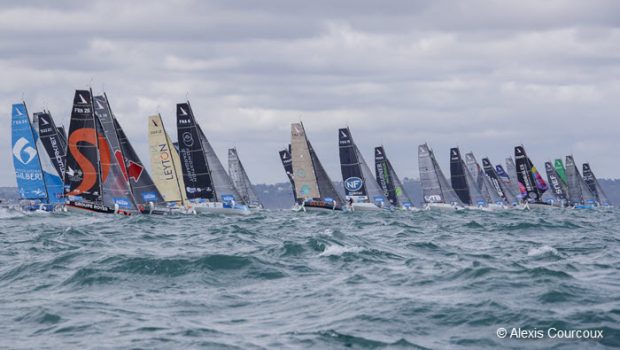


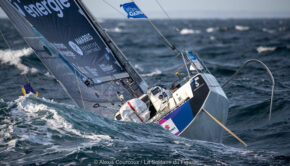
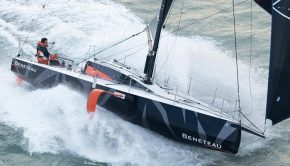
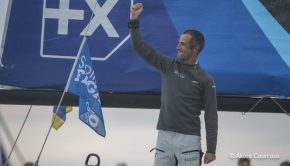
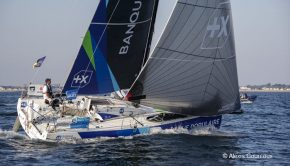
 We’ll keep your information safe.
We’ll keep your information safe.